I tried this hidden desktop mode on my Pixel 9 Pro XL — Google needs to bring this to all Android phones
It's one step closer to having a computer in my pocket
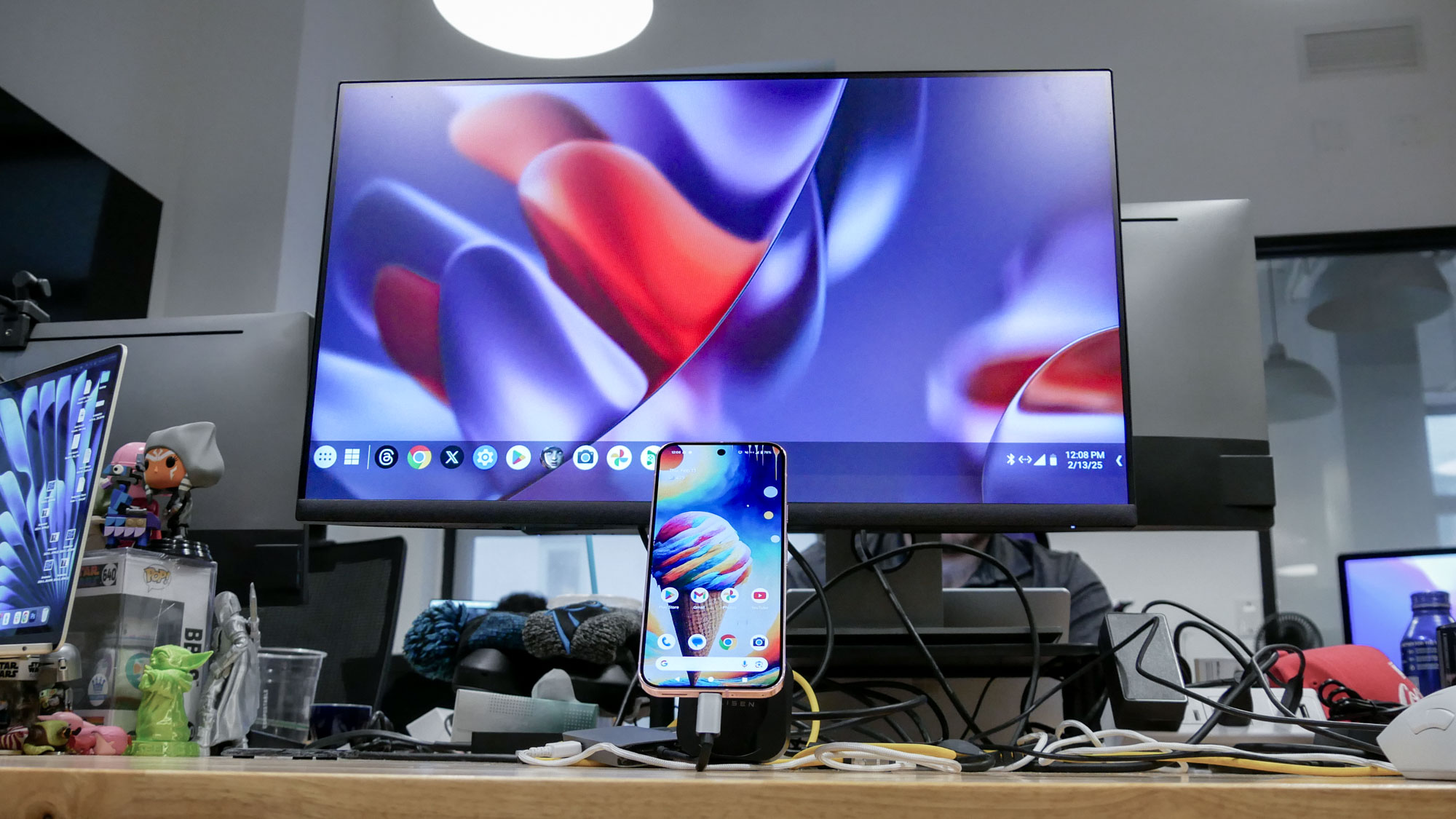
I don’t understand why we don’t have computers that fit in our pockets. Oh wait, we do — they’re called smartphones. So why am I still lugging around a laptop every day to work?
This is exactly the reason why I’ve leaned on Samsung DeX so much on my Galaxy phones that support it. There’s no kidding that DeX is one of the most underrated phone features around, but I really find value in how it sort of replicates the desktop PC experience with its ability to run multiple apps simultaneously whenever I connect my phone to an external monitor. I’ve purposefully left my laptop at home on days when I have to commute to the office thanks to this.
However, I stumbled upon a hidden feature in my Pixel 9 Pro XL that gives me a similar desktop PC-like experience — and I’m stoked about it. After spending a week with it, I hope that Google will make it a native feature for all Android phones.
Not quite as polished as DeX, but usable
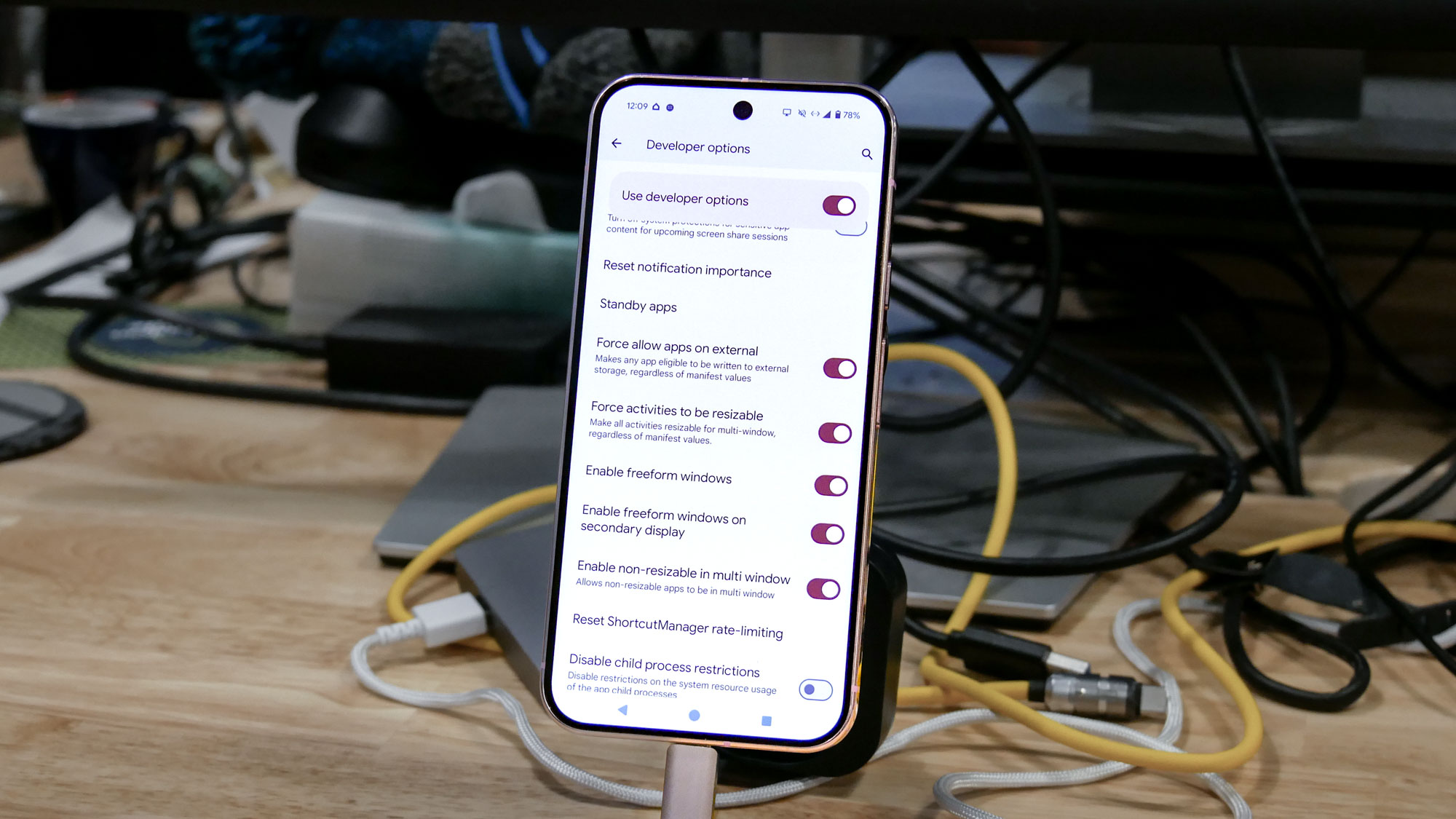
Google’s desktop mode isn’t polished at all, which is why it’s accessible only once developer mode is enabled. Still, it gets the job done for most things I need to do on a daily basis. Once I’ve connected my Pixel 9 Pro XL to my monitor at work (through a USB-C hub, which also has a mouse and keyboard connected to it), Google’s desktop mode launches after I select the on-screen message on my phone to mirror my screen.
Similar to Samsung’s DeX, this desktop-like environment lets me multitask a lot better than on my phone. This is due to how I can run multiple apps simultaneously and resize their respective windows in such a way where I can feasibly run upwards of four apps. Try doing that on any phone! You can’t.
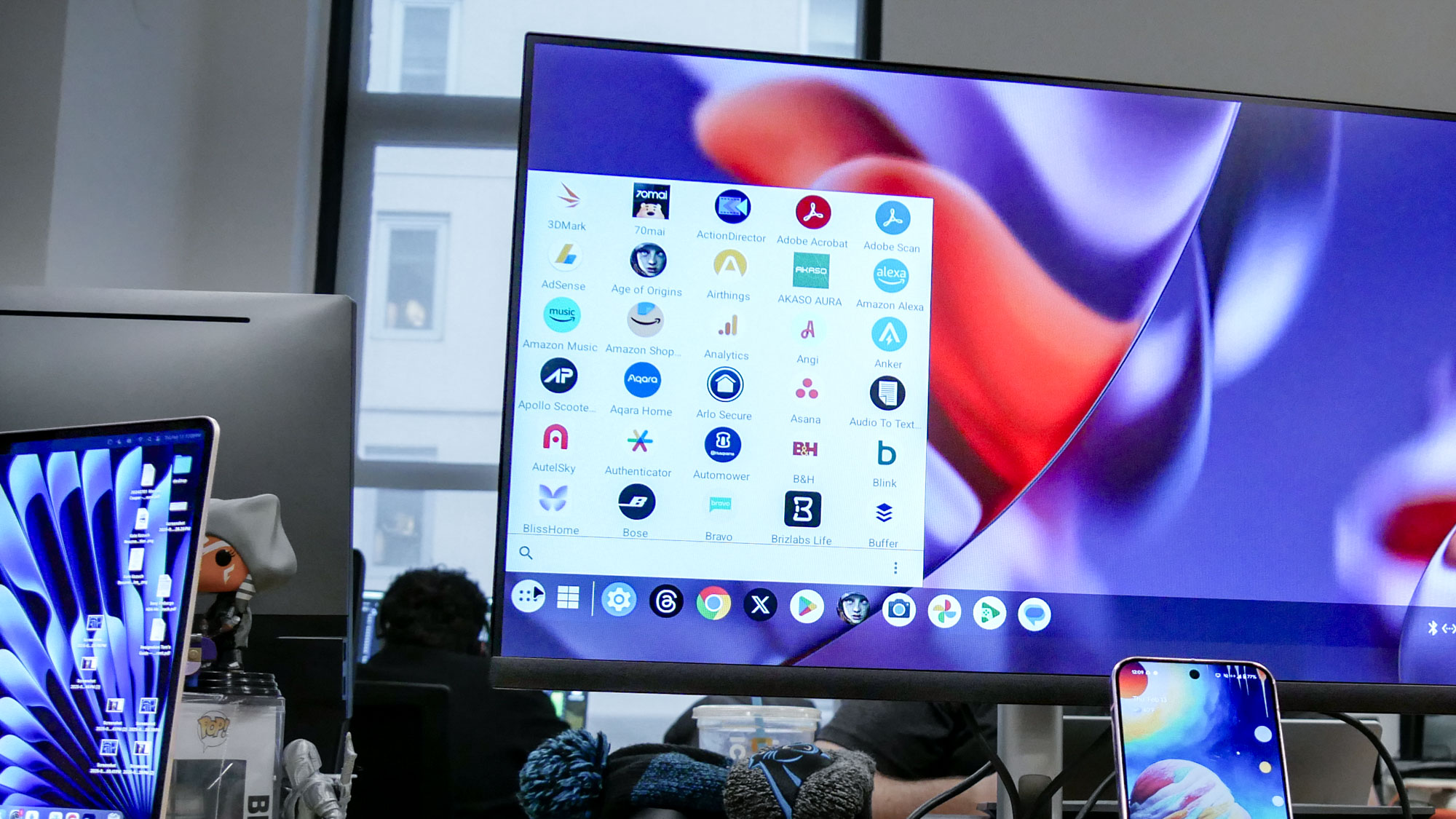
And since this mode lets me use my mouse and keyboard, my productivity is amplified over what I could traditionally do on just my phone. However, I wouldn’t go far to say it would totally replace my laptop. That’s because it can’t quite handle all the stuff I rely on to get my work done. For example, there are several Chrome scripts I use for work which aren't available to me on my phone.
There are also other oddities in the interface, like how it can’t automatically tile windows and how it doesn’t support common keyboard shortcuts (like Alt + Tab for quick switching apps). It’s more of a manual affair with this interface, which is why Samsung DeX feels like a more polished interface.
Sign up to get the BEST of Tom's Guide direct to your inbox.
Get instant access to breaking news, the hottest reviews, great deals and helpful tips.
How to access Pixel 9 Pro XL desktop mode
1. Enable developer mode
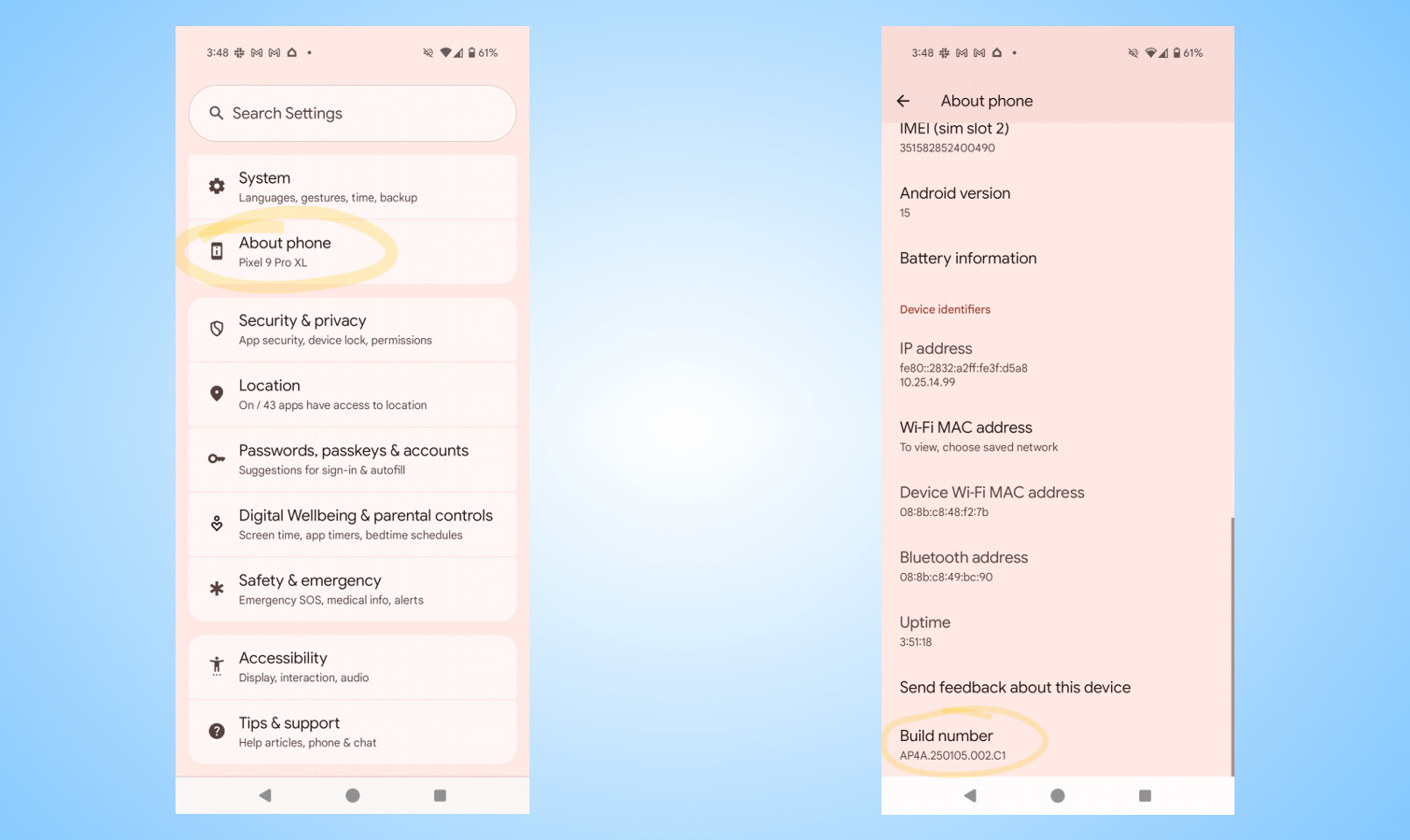
In order to access this hidden mode, you have to enable a few settings hidden in Developer Mode. You just need to head on over to the Settings > About Phone > Build Number, then proceed to tap repeatedly on the build number until a message appears saying that you’re now a developer.
2. Enable settings for Desktop Mode
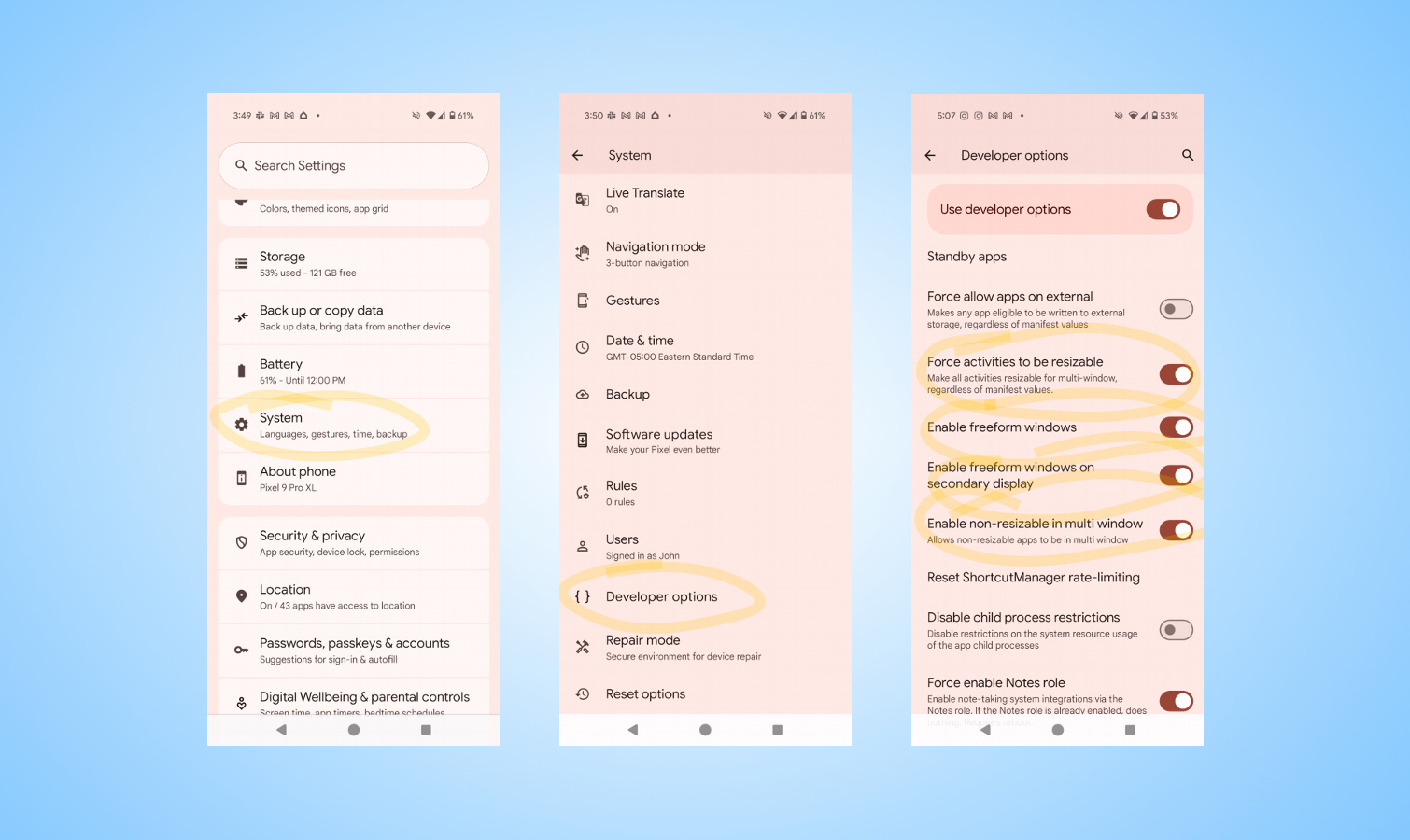
From there, you’ll want to navigate to Settings > System > Developer options. Now scroll down all the way to the bottom of the list and toggle on the following options: Enable Freeform Windows, Force activities to be resizable, Enable freeform windows on secondary display, and Enable non-resizable in multi window.

Even though it’s not necessary, I would recommend installing the Taskbar app as well because the native one in the Pixel 9 Pro XL’s desktop mode is broken. There’s a button to access the apps panel, but the home and back functions are strangely hidden. They’re there towards the bottom edge of the panel because those actions happen when I press on those corresponding areas.
Using the Taskbar app allows me to better juggle around all the apps, versus manually relaunching each one from the apps panel whenever I minimize windows.
Bottom Line
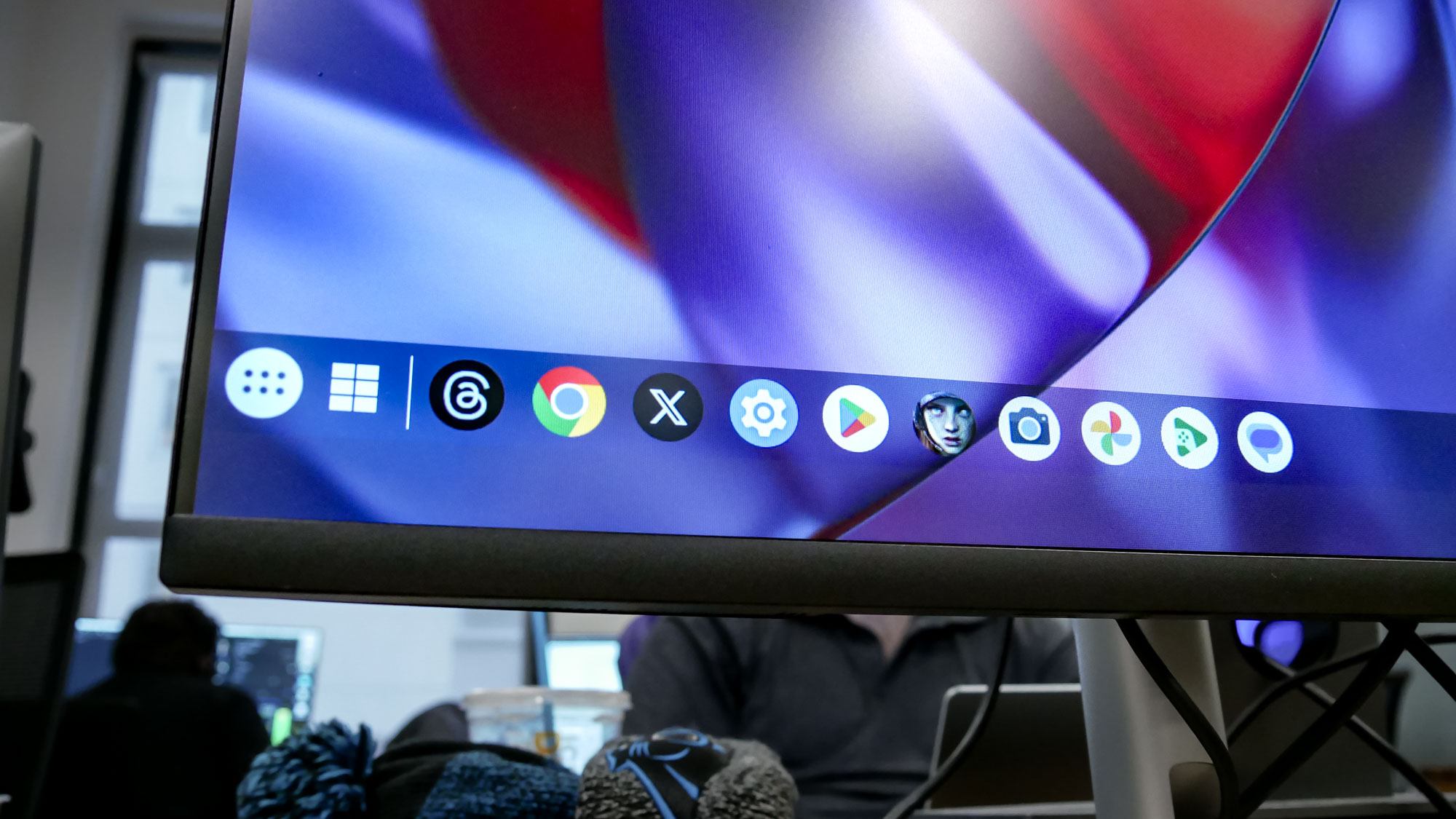
Clearly there’s still a lot of work needed before this desktop PC-like interface can convince me it’s just as good as Samsung DeX. Nevertheless, the foundation is here and I hope that Google continues to develop this because I’ve also found out that it supports touchscreen displays.
Google has a long way to go before this desktop mode matches Samsung's DeX, but making it a native feature for other Android makers to add on to and enhance could make for a worthwhile experience in those times I don't want to lug around my laptop.
More from Tom's Guide

John’s a senior editor covering phones for Tom’s Guide. He’s no stranger in this area having covered mobile phones and gadgets since 2008 when he started his career. On top of his editor duties, he’s a seasoned videographer being in front and behind the camera producing YouTube videos. Previously, he held editor roles with PhoneArena, Android Authority, Digital Trends, and SPY. Outside of tech, he enjoys producing mini documentaries and fun social clips for small businesses, enjoying the beach life at the Jersey Shore, and recently becoming a first time homeowner.
You must confirm your public display name before commenting
Please logout and then login again, you will then be prompted to enter your display name.
